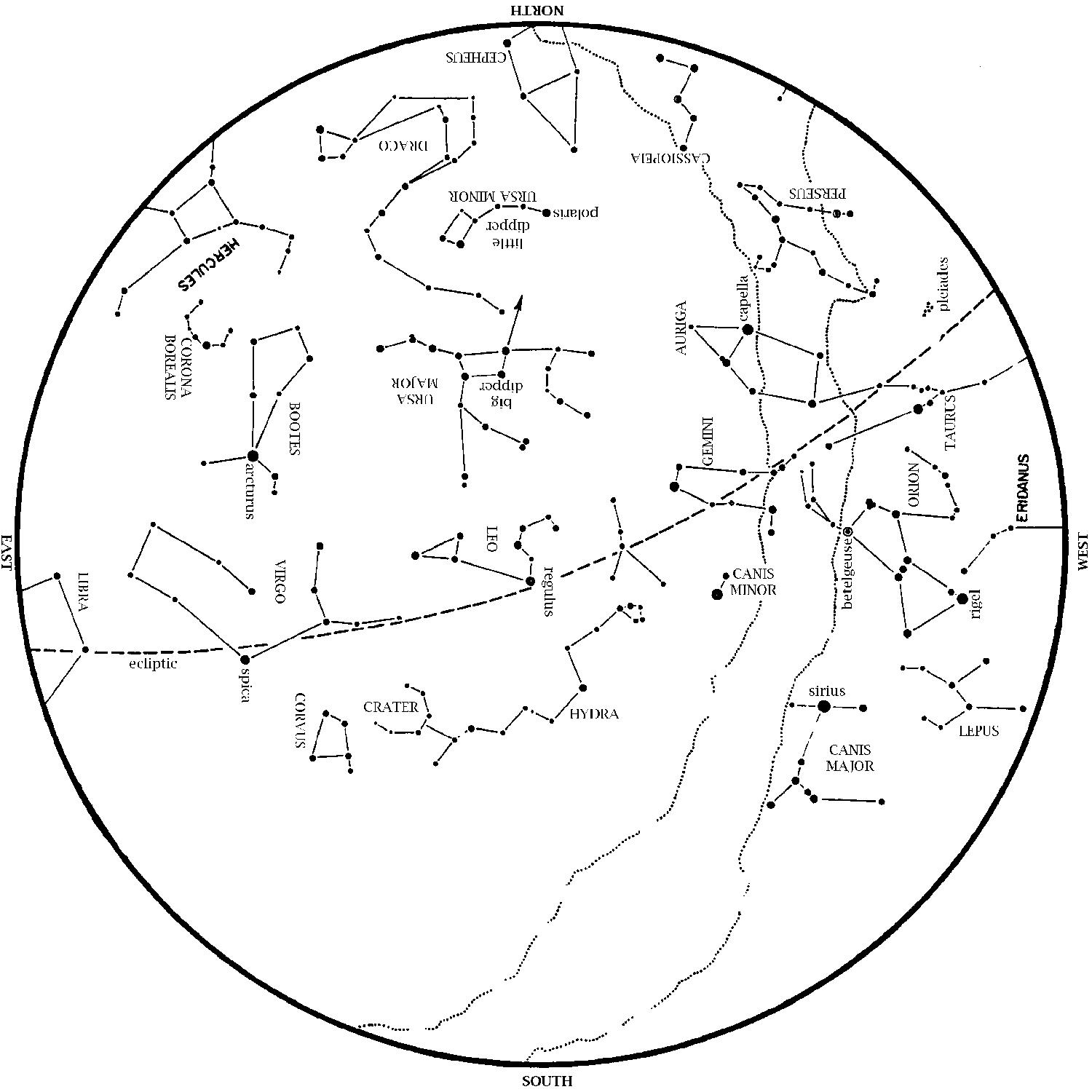
This star map shows the Houston sky at 10 p.m. CDT on April 1, 9 p.m. CDT on April 15, and dusk on April 30. To use the map, put the direction you are facing at the bottom. Jupiter is high in the west in Gemini the Twins. Below them, Dazzling Orion the Hunter sits with Taurus the Bull. To Orion’s left are the two Dog Stars: little dog Procyon and big dog Sirius. Sirius outshines all other stars we see at night. The Big Dipper is high in the north. Leo the Lion, is high in the south. These stars, along with Arcturus, announce the spring. Mars is up all night long this month.
This month, Jupiter remains well placed for evening observing all spring. Look for it high in the west at dusk.
Mars is up virtually all night long this month. On April 8, Earth passes between the Sun and Mars. This places Mars at opposition, an alignment where we see Mars rise at dusk and set at dawn — Mars is up literally all night long. It turns out that Mars is farther from the Sun than average when Earth passes it, so at this opposition Mars is not as big or bright as in years past. Still, Mars now rivals the brightest star at night, Sirius, and is now as bright as it will get until May 2016.
Saturn remains in the pre-dawn sky. Face south right before sunup to see it. You can also begin observing Saturn in late evening. It rises just after 10:30 p.m. tonight, and then about a half hour earlier each night until by month’s end, it’s up until twilight. Saturn comes to opposition next month.
Venus remains in the morning sky. Look southeast at dawn for the brightest point of light there; only the Sun and Moon outshine Venus. Venus remains a morning star for almost all of 2014.
Brilliant winter stars shift towards the west during April. Dazzling Orion is high in the southwest at dusk. His three-starred belt is halfway between reddish Betelgeuse and bluish Rigel. Orion’s belt points right to Aldebaran in Taurus the Bull. Above Orion are the twin stars Castor and Pollux, marking the heads of Gemini the Twins. Jupiter is among the Twins this month. You can find Sirius, the brightest star we ever see at night, by drawing a line south from Orion’s belt (left as you face west). Forming a triangle with Betelgeuse and Sirius is Procyon the Little Dog Star.
Joining the winter stars are stars of spring in the south and east. Look for Leo the Lion almost overhead at dusk. In the east, extend the Big Dipper’s handle to “arc to Arcturus” and then “speed on to Spica.”
Moon Phases in April 2014:
1st Quarter: April 7, 3:31 a.m.
Full: April 15, 2:44 a.m.
Last Quarter: April 22, 2:52 a.m.
New: April 29, 1:17 a.m.
The Full Moon of Tuesday morning, April 15, fully enters the Moon’s shadow, causing a total eclipse of the Moon. The Moon first encounters the shadow at 12:58 a.m.; that’s when the partial phases begin. By 2:06 a.m., the Moon is all the way inside the shadow, and thus totally eclipsed. The Moon takes 78 minutes to cross the shadow, so totality lasts until 3:24 a.m.. The Moon then emerges from the Earth’s shadow until the eclipse is over at 4:33 a.m.
Keep in mind that the eclipse happens in the morning hours of Tues., April 15. Don’t go out looking for this Tuesday night! Our George Observatory will be open from sundown Mon., April 14 until dawn on Tues., April 15 for observing the eclipse. If you can’t come to the George at such early morning hours, remember that anyone who sees the Moon sees the eclipse. You can observe this eclipse from your backyard or even through your window if you have one that faces south/southwest.
The only thing that can stop you from seeing the eclipse is overcast weather. If we do get clouded out, or if you can’t get up in the middle of the night, we can observe another eclipse on Oct. 8, 2014, right before dawn.
Click here to see the HMNS Planetarium Schedule
On most clear Saturday nights at the George Observatory, you can hear me do live star tours on the observation deck with a green laser pointer. If you’re there, listen for my announcement.
Clear skies!





